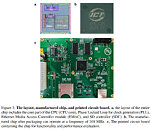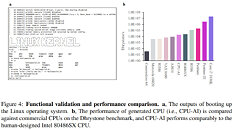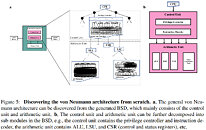A group of researchers in China have used a new approach to AI to create a full RISC-V processor from scratch. The team set out to answer the question of whether an AI could design an entire processor on its own without human intervention. While AI design tools do already exist and are used for complex circuit design and validation today, they are generally limited in use and scope. The key improvements shown in this approach over traditional or AI assisted logic design are the automated capabilities, as well as its speed. The traditional assistive tools for designing circuits still require many hours of manual programming and validation to design a functional circuit. Even for such a simple processor as the one created by the AI, the team claims the design would have taken 1000x as long to be done by humans. The AI was trained by observing specific inputs and outputs of existing CPU designs, with the paper summarizing the approach as such:

The resulting RISC-V32IA processor dubbed "CPU-AI" was taped out on a 65 nm lithography and operates at 300 MHz—with up to 600 MHz being possible—and is able to successfully run Linux, SPEC CINT 2000, and Dhrystone, performing similarly to Intel's venerable i486SX from 1991. Though they did not qualify which speed of i486SX they compared against, be it 16, 25, or 33 MHz. They suggest that performance could still be improved with augmented algorithms, and In the conclusion of the paper the research team speculates on a self-evolving machine that can design its own iterative upgrades and improvements. While that may be far off in the future the AI did independently discover the von Nuemann architecture through its observation of inputs and outputs. This leads to speculation that the algorithm can be tweaked to focus on fine-grain architecture optimization to work around traditional bottlenecks that it may encounter, a task which can usually be quite difficult for human engineers to accomplish.


View at TechPowerUp Main Site | Source
(...) a new AI approach, which generates large-scale Boolean function with almost 100% validation accuracy (e.g., > 99.99999999999% as Intel) from only external input-output examples rather than formal programs written by the human. This approach generates the Boolean function represented by a graph structure called Binary Speculation Diagram (BSD), with a theoretical accuracy lower bound by using the Monte Carlo based expansion, and the distance of Boolean functions is used to tackle the intractability.

The resulting RISC-V32IA processor dubbed "CPU-AI" was taped out on a 65 nm lithography and operates at 300 MHz—with up to 600 MHz being possible—and is able to successfully run Linux, SPEC CINT 2000, and Dhrystone, performing similarly to Intel's venerable i486SX from 1991. Though they did not qualify which speed of i486SX they compared against, be it 16, 25, or 33 MHz. They suggest that performance could still be improved with augmented algorithms, and In the conclusion of the paper the research team speculates on a self-evolving machine that can design its own iterative upgrades and improvements. While that may be far off in the future the AI did independently discover the von Nuemann architecture through its observation of inputs and outputs. This leads to speculation that the algorithm can be tweaked to focus on fine-grain architecture optimization to work around traditional bottlenecks that it may encounter, a task which can usually be quite difficult for human engineers to accomplish.


View at TechPowerUp Main Site | Source



